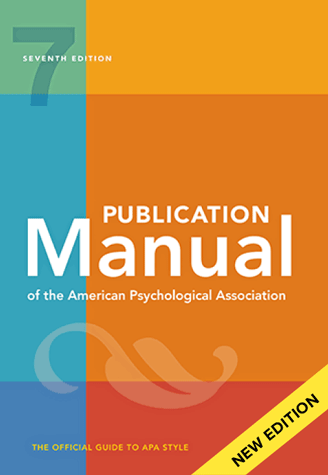Each edition brings updates and new guidelines, so if you’re used to the 6th edition, it is beneficial to still pick up a new version for your reference. In the meantime, we’ve put together some of the new changes to the 7th edition.
What’s new in the 7th Edition?
There are a lot of changes, and for a full detailed list and explanation of the changes, it’s best to pick up the new edition of the Style Manual, which briefly details all of the changes in the Introduction. You can also go to the APA Style website for a more comprehensive guide to the changes. Below are some of the most notable changes:
- New information and guidance about quantitative, qualitative, and mixed methods articles, student papers, and dissertations; guidance on data sharing
- Updated heading format for levels 3, 4, and 5; new sample papers for the reader (both professional and student)
- Journal article reporting standards (JARS) is updated and expanded, and now includes qualitative and mixed methods research
- The singular “they” is endorsed to reflect inclusive usage, more guidance to prevent anthropomorphism
- Bias-free guidelines on language to encourage respectful writing and updates have been made on best practices on bias-free and inclusive language; new guidance on how to improve participation in research
- Use one space after a period instead of two, unless instructed otherwise by a professor
- Updates on abbreviations, proper nouns, the presentation of numbers, gene and protein names, and lists
- More than 40 new sample tables and figures on many different topics
- Changes to flexibility of presentation of tables and figures; formatting of tables and figures is parallel
- In-text citations have been simplified; new guidance on formatting quotations from research participants; examples of paraphrasing
- Number of authors included in a reference entry has changed – up to 20 are named before an ellipsis
- Presentation of DOIs and URLs have been standardized; new guidance on when to provide them
- New formatting guidance for annotated bibliographies
- Templates are now provided for every reference category
- Changes to references have been made to make them more streamlined
- Updated legal reference standards (still based on Bluebook)
- New content on how to adapt a dissertation or thesis into journal articles, how to choose a journal, and navigating submissions
- New content on promoting scholarly work after publication
As you can see, not only are there updated formatting guidelines in the 7th edition, but there’s also a lot of new content for students and professionals doing scholarly writing. All of this makes buying the new edition well worth it, if you can. It’s also worth noting that while the new edition of the Manual might be out, ask your department which formatting guidelines they want right now. If you’re submitting your dissertation or thesis this year, the school might specify that 6th edition formatting is acceptable or required, before they switch over to the new guidelines in the future.
Here at Dissertation Editor, we’re here to help you with formatting issues and ensure that your dissertation, thesis, article, or paper meets the required formatting guidelines. Our editors are up-to-date with the latest style guide editions and are here to assist you. Contact us today to learn more about our range of services.
< Tips for Effective Presentations Dissertation Editor: What We Do >
